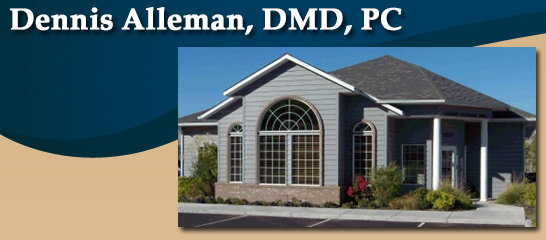Bonding
Direct Composite Bonding
The most simple form of 'white filling' is technically called a Composite. It is made up of a composite quartz resin and usually contains some sort of light sensitive agent. These light cured composites are extremely cosmetic and most often bonded into place in one appointment. For this reason, they are often referred to as "bonding". They can be used in both the front of the mouth as well as in your back teeth. These materials come in a variety of shades so that they will match the color of your own teeth. Some of these composite materials have been specifically designed to actually withstand the incredible forces you can exert when chewing on your back teeth.
In order to bond a filling material to your tooth it is first necessary to remove decay, prepare the tooth and then to condition the enamel and dentin. Once conditioned, a thin resin is applied which bonds to the etched surface. The bond strength of these fillings is incredible. Today we can bond plastics and even amalgam (silver fillings) to your teeth. Bonding increases the strength of these restorations far beyond those of only a short time ago.
Flowable Composite / Air Abrasion
Air abrasion, also called "micro abrasion" and kinetic cavity preparation, is a method of tooth structure removal considered to be an effective alternative to the standard dental drill. Air abrasion technology functions much like the sandblasting technique used to clear graffiti from walls. An air abrasion hand piece blows a powerful air stream of tiny, fine aluminum oxide particles out of its tip onto tooth structure. Air abrasion uses the kinetic energy principle, in which particles bounce off the tooth and blasts the decay away. It most commonly is used to prepare various types of cavities to be restored with composites, or "white fillings." Air abrasion also can be effectively used to repair cracks and discolorations, prepare tooth surfaces for bonding procedures, and perform additional procedures.
What are its advantages?
Air abrasion procedures are virtually painless, which, in most cases,
eliminates the need for an anesthetic injection. Air abrasion systems
produce no vibration and no heat from friction. The technology can´t harm
soft mouth tissue and they operate very quietly. Because air abrasion
cuts tooth surfaces with the utmost precision, it removes less tooth than
the drill and it reduces the risk of enamel micro-fracturing. In other
words, the advantages are more of your tooth is preserved, there is little
or no discomfort, no anesthetic numbness is needed, and treatment time
is usually shorter.
How does air abrasion work?
Air abrasion procedures can leave an accumulation of harmless, dusty particle
debris in the patient's mouth, resulting in a gritty feeling that is eradicated
by rinsing. Your dentist may require you to wear protective glasses during
the procedure, and a rubber dam may be applied inside your mouth and around
the tooth area being treated to serve as a particle barrier. To reduce
dust buildup, the dentist or dental assistant may use a vacuum hose or
a water spray technique while administering air abrasion.
Is air abrasion suitable for everyone?
Yes. It is an especially good option for children who may be afraid of
the needle, and the noise, and vibration of a regular dental drill. However,
there are some treatments, like crown and bridge preparation, that still
require the use of a dental drill. Air abrasion can't be used as an alternative
in every procedure.
Indirect Composite
Indirect composites require two or more visits and include inlays, onlays, veneers, crowns, and bridges. These are constructed with gold, base metal alloys, ceramics, or composites. At the first visit, a dentist will prepare the tooth and make an impression of the area that will be restored. At the second visit, the dentist will place the new restoration into the prepared area.
